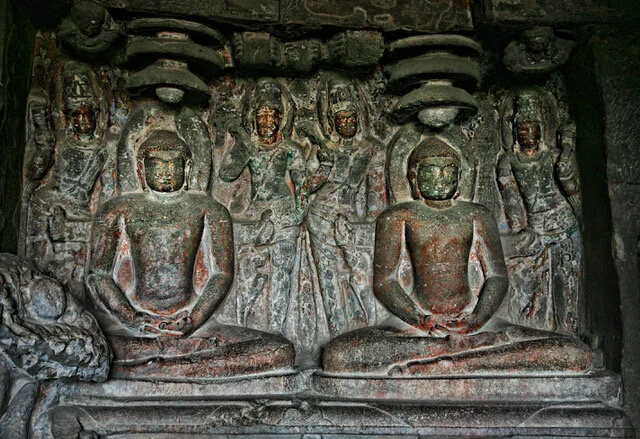WARM-UP SEQUENCE
in preparation for Roots of Modern Yoga - January 27th with Richard Rosen
I’ve had a copy of BKS Iyengar’s Light on Yoga now for 40 years. When I bought my first copy of this book (I’m probably on my fourth one by now), yoga instructional manuals were few and far between, and the 198 asanas (there are also two mudras) were just about the only ones we knew about. And of those 198, there are at least a quarter of them that are far beyond the ability of most students. Today of course, there are countless manuals available – I have at least 60 in a bookcase in my practice space. That’s just the tip of the iceberg – but the asanas included in them are pretty much the same as those in Light on Yoga.
So it’s not widely known that there are literally hundreds of traditional asanas that haven’t been known and practiced for a very long time. One of the manuals I own is titled The Encyclopedia of Traditional Asanas, published by the Lonavla Yoga Institute in Lonavla, India. The editors of this book searched through over 160 manuscripts, many of them unpublished and so unavailable in English translation, and found over 900 asanas. A few of them are rather strange. Take, for example, dikshasana, the pose of “initiation” (diksha). If you’d like to try, simply stand under an ashoka tree, the “sorrowless” tree, which conveniently grows in the foothills of the Himalayas, and pull five handfuls of hair out of your head. This is a practice performed by Jaina monks as a preparation for their initiation. By doing this, the book assures us that “one attains peace.”
About half the poses in the book are far beyond the average student’s ability, but the other 450 offer a rich store of asanas to choose from. A good many of them are familiar to us, but there are also several hundred that have dropped out of use that could very profitably be rescued from oblivion. Such is the goal of the upcoming workshop on January 27th: Roots of Modern Yoga. In this workshop, we’ll have a go at some of the more accessible of these forgotten asanas.
Here’s a simple sequence that we’ll use as a warm-up for the class. Lie on you back with your heels stretched away from your pelvis and your arms overhead, stretched out in the opposite direction. Three hundred years ago this exercise was initially known as tadagi mudra, the “pond seal,” because in doing the stretch, the lower belly naturally hollowed out like a “pond.” Somewhere along the way, it transmogrified into an asana, yashtikasana, the “stick pose.” Hold for a few minutes, directing your inhales into the back of your sternum to open the chest. On the exhales, reach out a bit more through the feet and hands.
Next with an exhale, draw your thighs to your belly and wrap your arms either around the shins or back thighs, whichever you prefer. Today we know this pose as pavana muktasana, the “wind-freeing pose,” but tradition calls it the “millstone pose” (drishadasana). One of the texts including this exercise recommends rolling from side to side. Hold for about a minute. If you’d like to challenge yourself a little more (and who doesn’t want more challenge in their lives nowadays?), exhale and curl into a ball shape by lifting your nose to your knees. Would you like to guess this pose’s name? I’ve already given a hint – that’s right, “ball pose” (kandukasana). Hold for 30 seconds or so, feeling the length growing along your back torso from the tail bone to the base of the skull.
Want to go even further? Clasp your hands on the back of your head, and press your elbows to your knees, hold for 30 seconds to a minute. This is called – and this will seem odd to us – uttanasana, the “intense stretch pose,” which we know as the standing forward bend. Here’s an example of how, throughout the long yoga tradition, sometimes the same name is given to two much different poses. The opposite will also occur, the same pose given two very different names.
Finally, for all you cat lovers, squeeze your elbows between your knees. This is marjara uttanasana (majarottasana), the “intecat pose.” Again hold 30 seconds to a minute, then slowly release your spine to the floor one vertebra at a time – the head comes last. Stretch your hands overhead once again, raise your legs to perpendicular, and stretch your torso between the thigh bones and fingertips.
One more time hold for about a minute, letting the legs weigh down on the pelvis, and widening the back torso on the floor. This is called the “scorpion pose” (vrishikasana). As you may know, the two poses with that name today are much different and much more challenging. When done, lower your legs slowly to the floor and let yourself release. Take a few breaths and smile.
The sequence for the class continues on from here. Do you want to learn the “sandal pose” (padukasana)? How about the “potter’s wheel” (kulala cakrasana)? Or the original “camel pose” (ushtrasana)? See you on January 27th, 9 AM sharp...
~ Richard Rosen

